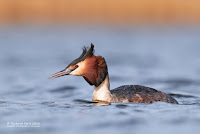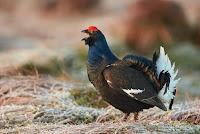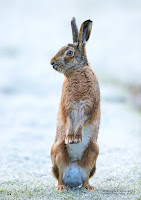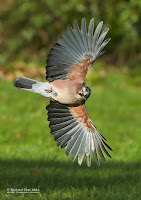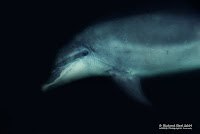In this electronic age we are all accustomed to viewing images on the screens of phones, tablets or monitors. The majority of us view photographs that are low resolution versions which have been uploaded to websites or various social media where their quality is often further reduced by compression. We are missing a lot. When I am preparing the low resolution versions of the images to post on this blog it is a shame you are unable to see the version before me where every feather filament or strand of hare can be seen along with a whole range of other subtle details lost during downsizing. When you are able to see this detail it draws you into an image and makes you look deeper and marvel at the beauty of nature rather than just glancing quickly at it and thinking 'nice photo'.
To see a photograph in its full glory it needs to be printed. A photograph often takes on a whole new life when it has been printed by a commerical labortatory, mounted, placed in a complimentary frame and hung on a well lit wall. So I urge you to free some of your photographs from the confines of the screen and release them into the world and on to the walls of your home as printed versions.
It is always good to see a printed version of your images. Mine have appeared in numerous books, posters, pamphlets and magazines over the years. However, up until this point I have never produced a full magazine article with both text and images. I recently approached Bird Watching Magazine with an idea for an article on Western Oakwoods and summer migrant birds which I am happy to say they accepted and fills 8 pages of this month's issue (May). A sample of a couple of pages (taken with my ipod to make the text unreadable!) is shown below:
I will also use this little update post to tell you of an exciting photography trip that I have had booked for a long time and now is just over a month away. Following on from my trip to the wonderful birds of Hungary last year, I decided for this year's trip I would head a little further east and into Romania. This will include a few days on the Danube Delta (a wetland wildnerness that I have always wanted to visit), a couple of days in the mountains and some time on some coastal lagoons by the Black Sea. Of course I will give you a full account of the trip and hopefully have some interesting encounters and photographs to share with you.














.jpg)


.jpg)
.jpg)



.jpg)




.jpg)


